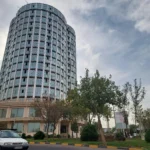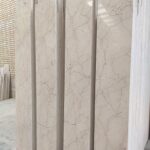Portland cement, one of the main building materials in the construction industry, is available in the market in a wide variety. By using different raw materials, various types of this type of cement are produced, and by increasing and decreasing the amounts of raw materials, cements with different characteristics and qualities are obtained for different uses. In this article, we are going to examine the types of Portland cement and its uses. For this purpose, these products are placed in five general categories and then explain the characteristics of each of these categories and finally, you can click for more information about the price of cement.
Ordinary Portland cement or Type I cement
Ordinary Portland cement, also known as Type 1 cement, is one of the most widely used types of cement in the construction industry. Looking at the various buildings around, it is easy to see that many of them are built using ordinary Portland cement.
In normal weather conditions, Type I Portland cement is preferred by consumers over other products. One of the main reasons for this preference is the reasonable price of type 1 cement. Due to its abundance in the market, this product has an efficient price and is produced and marketed with high quality by various factories and workshops.

Modified cement or type two cement
Type 2 Portland cement, also known as medium cement or modified cement, is one of the types of retarding cement. The term “retarder” refers to more time to dry and this type of cement does not dry easily.
Type 2 Portland cement is resistant to sulfate attack, which makes it suitable for locations prone to moisture. In most cases, this type of cement is used for places like sewers.
One of the important features of Type 2 Portland cement is less heat generation during use. This feature makes it possible to use this cement in the foundation of buildings located in hot and dry areas. In these places, the use of ordinary cement may generate a lot of heat and is not recommended, while Portland cement type 2 is introduced as a better and more suitable option.
The use of modified cement is not recommended in some places. In places where the air temperature is low and so-called cold, the use of modified cement is not suitable at all. Due to the lack of sulfate resistance in this type of cement, it is recommended not to use this product in places where there is a lot of sulfate.
Very quick setting cement or type three cement
Very quick cement, or type 3 Portland cement, refers to its name, which has the ability to dry in the shortest possible time. One of the main reasons for this quick drying of this product is that type 3 cement is made into the smallest possible form using special tools, which easily reacts with the weather and dries itself very quickly.
Types of cement type 3 are known as the best option for repairing places where the cement is cracked. Using this type of cement in cracks increases the strength and durability of the wall and increases the useful life of the wall. Considering that Type 3 cement sets very quickly, it is a suitable option for use in the precast concrete industry.
One of the things that limit the use of quick-setting cement are places with high temperatures. In general, since this type of cement reacts quickly and generates a lot of heat, it is recommended not to use this product in places with temperatures above 32 degrees Celsius.
Low temperature cement or type four cement
Type 4 Portland cement, also known as low heat cement or slow setting cement, requires a long time to dry and react. This type of cement produces less heat when it dries and is very suitable for use in hot places.
In cases where long walls are going to be built, Portland cement type 4 is the best option, because when using this product, more time can be spent to assemble the wall and place the pieces on top of each other.
In massive concreting such as dams and bridge foundations, slow-setting cement is the best option, because its resistance and strength are higher. In places like swimming pools, it is suitable to use long-lasting cement, because this product has significant resistance to water and moisture and does not crack easily.
Anti-sulfate cement or type 5 cement
Type 5 Portland cement, known as anti-sulfate cement, is the fifth and last type of Portland cement, known as one of the most resistant types of cement. This product is used in a wide range of fields and can generally be used in all buildings and structures, but due to the high price, it may not be economically advantageous in some cases.
To prepare anti-sulfate cement, the amount of calcium aluminate triple is limited. This limitation makes the produced cement show a very high resistance against sulfates. Due to the need to accurately measure anti-sulfate cement compounds, it is difficult to produce this product, and this increases its final price in the market.
In places such as water structures that are always exposed to water tides, using anti-sulfate cement is the best option. In these places where there is constant humidity and water circulation, various cements are easily cracked and destroyed, but this is not the case with anti-sulfate cement. This type of cement is recognized as the best type of cement in the market due to its very low permeability, higher workability, higher chemical resistance, and protection of reinforcement against rust and corrosion. In another article, you can read the table of cement production and consumption in the country.







